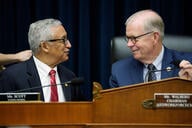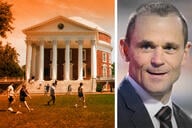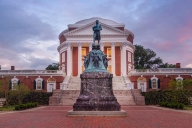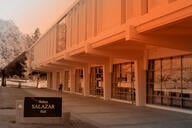You have /5 articles left.
Sign up for a free account or log in.
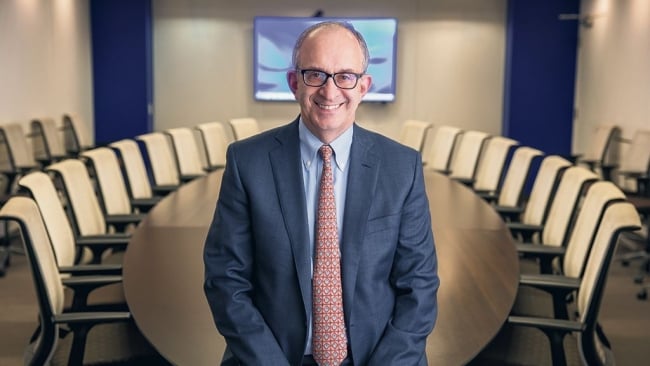
Alan Kadish has been president of Touro University since 2010.
Touro University
Touro University, a private Jewish-sponsored institution based in New York City, has grown significantly in recent years, adding campuses across the U.S. as it expands its mission.
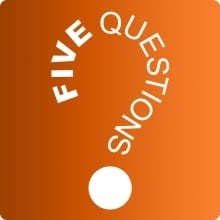
Founded in 1970 by Rabbi Bernard Lander, Touro welcomed its first class of 35 students the next year. By 1972 it established its Division of Health Sciences, an area of studies that remains integral today as the university expands into the health fields. While it remains headquartered in New York City, Touro has grown to more than 20,000 students and added multiple campuses. Beyond New York, Touro has sites in California, Illinois, Montana, Nevada and campuses abroad.
Touro University president Alan Kadish joined Inside Higher Ed via Zoom for a conversation about Touro’s growth, his tenure as president and what the sector should expect from Donald Trump’s second term in the White House and what that may mean for Touro’s accreditation.
1. I understand you are only the second president in the history of Touro University. What is it like to follow in the footsteps of someone who was president of the university for almost 40 years?
Everyone thought that this would be an impossible task, to follow a founder who was extraordinarily successful and visionary and ran the institution for close to 40 years. As it turns out, the opposite was true. People thought the institution was so bound up in one individual that they didn’t expect it to survive. I think we’ve done pretty well in the last 15 years. But just the fact that we were OK surprised people. It turned out that rather than having to meet extraordinarily lofty expectations, just passing was sort of beating expectations. It turned out, paradoxically, to be surprisingly easy. There are times where my predecessor’s thoughts, actions and plans loomed large and did provide some challenges, but over all, it was surprisingly easy, because he left a good, strong institution with good people. Obviously, this is not one person’s effort.
2. Tenure for presidents is shrinking. They’re no longer spending as many years in the position as they used to. You’ve been a president since 2010. What is the key to longevity in the presidential seat?
Students are extremely important, and our focus is on our students. But students come and go. The most important thing is a good relationship with the board and faculty and, to some extent, alumni. But I would say it’s the faculty and board that are most important. I’ve been lucky to have a supportive board and have a faculty that believes in our mission and are really dedicated.
Each of us balances self-interest with communal responsibility. That’s the nature of being a human being. But of course, there’s a pretty wide spectrum of the way people view that, and I would say that compared to most faculties, our faculty—while, of course, they’re concerned about personal issues—are really concerned about the mission and the community of students. I think that makes us unusual, in a sense that the faculty’s mission is very much aligned with the university’s mission.
Parenthetically, I think the short tenure of college presidents is a real challenge for institutions. This is not a particularly easy job, and transitions are not easy. And in the current environment, where there’s pressure on higher education, having a new leader every three or four years is really disruptive.
3. Touro University is expanding nationally at a time when colleges are increasingly closing, merging and cutting programs due to fiscal challenges. Why and how are you expanding?
Touro has been expanding to try to serve communities around the country. We have dual missions; the expansion is not a business strategy, it’s a mission-based strategy. The mission-based strategy has two components to it. One, we’re not a faith-based institution, but we call ourselves a Jewish-sponsored institution, and one of our missions is to serve the Jewish community. So in places where we feel we can help the Jewish community, we’ve expanded for that reason. But more of the expansion actually has been because we have a commitment to the community to fill two kinds of gaps. First, students who want to be trained, who don’t have other great options, or options that are in many ways not attractive as ours. And second, communities that need an increased supply of professionals, particularly health-care practitioners.
Much of our expansion has been in the health-care field, and it’s been in places where there’s been a shortage of practitioners in a particular field where we feel we can fill a gap. One example is our newest osteopathic medical campus in Great Falls, Mont. At the time we’d planned the campus, there had never been a medical school in Montana. There is now one other, but at the time of planning, we were filling a void. The newest branch of our dental school will be in Albuquerque, N.M. And New Mexico has never had a dental school and has a shortage of practitioners. Now, that said, it doesn’t mean we ignore the financial implications of what we’re doing. Every new program we start, we look at the academic implications, the community implications and the financial implications. Community in this case means both students and the physical community in the area where we’re starting the school.
4. What kind of challenges do you see with that growth?
The biggest challenge is central management of institutions that are physically far away. It’s not the same thing as managing something in your building on campus. However, we were doing it successfully, even before COVID, I think, permanently changed people’s expectations about how you could have meetings. So it’s made it easier to not have to physically be present. I think we’ve been able to accomplish more remotely since people got used to that sort of communication during COVID. We’ve been using Zoom for almost a decade, because one of the early proponents of Zoom was a New York Medical College graduate [part of Touro University], so he brought it to us in 2015, well before the use of Zoom became routine.
5. What do you expect from a second Trump administration in terms of higher education?
I think there will be a push to decrease discretionary spending and decrease regulation. I don’t think that how those priorities will impact higher education is clear yet. I think there will be some cuts. Whether it be ones that will be significantly damaging or not, I don’t think we know yet. I think that there are some regulatory areas where both the cost and efficiency of higher education is dramatically adversely impacted by federal regulations, and those may get better.
Regarding regulation, because we’re dispersed throughout the United States, we have several regional accreditors that accredit Touro. Because the regional accreditors are no longer regional accreditors, we’ve attempted to consolidate that accreditation under our main accreditor [Middle States Commission on Higher Education]. And working with the U.S. Department of Education has been challenging, not because anybody has done anything bad, but because some of the regulatory requirements are, in our view, excessive. It has taken years for what should have taken a couple of weeks. We’re not trying to do anything bad—we’re trying to improve the efficiency of operations. There’s no reason that all our campuses can’t be under Middle States accreditation from an efficiency standpoint. And it’s been one computer glitch and regulatory glitch after another. A more common-sense approach to regulations in that regard would help.

